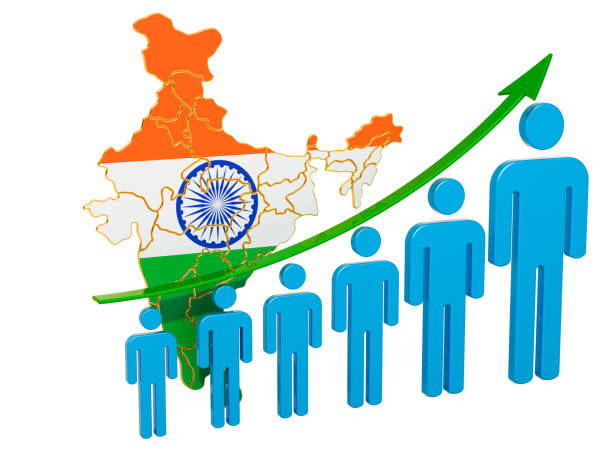India 4th Largest Economy : How It Surpassed Global Giants and What’s Next
India has officially become the 4th largest economy in the world, overtaking several global powerhouses in terms of GDP. This historic milestone positions India’s economy among the top 5 economies in the world, signaling a dramatic shift in global economic dynamics. As India’s GDP continues to grow, discussions surrounding the Indian economy, its policies, and its future trajectory are becoming more relevant than ever. This article explores how India achieved this feat, what helped fuel its rise, and what lies ahead.

The Economic Journey: From Developing Nation to Global Power
The story of India’s economy is one of resilience, reform, and reinvention. After gaining independence in 1947, India struggled with a closed and slow-growing economy. However, major economic reforms in 1991 — including liberalization and globalization — opened the doors to foreign investment and private enterprise, setting India on a new growth trajectory.
Over the decades, with the rise of the IT sector, globalization, and government-backed development programs, India’s GDP has seen exponential growth. The journey from being labeled a “developing nation” to becoming the 4th largest economy India has ever known is a testament to strategic planning and progressive reforms. NITI Aayog, the government’s policy think tank, has played a pivotal role in shaping long-term economic goals and driving national growth agendas.
2. Key Drivers Behind India’s Economic Rise
Several crucial factors contributed to making India the 4th largest economy:
a. Demographic Advantage
India has one of the youngest populations in the world, creating a large, dynamic workforce that fuels productivity and innovation.
b. IT and Services Sector Boom
India’s dominance in IT services, BPO, and software exports has made it a global tech hub. The export of digital services continues to add significantly to India GDP.
c. Government Reforms
Reforms like GST, Digital India, Startup India, and Make in India have simplified doing business and attracted global investments.
d. Digital and Financial Inclusion
With the widespread use of UPI and Aadhaar, India has leapfrogged into a modern, digitally connected financial economy.
e. Manufacturing and Exports
The Indian economy has seen significant growth in manufacturing exports, bolstered by PLI schemes (Production Linked Incentives) and growing global demand.
These factors collectively contributed to India’s current standing among the largest economies in the world.
Surpassing Global Giants: Who Did India Overtake and How?
In its rise to become the India 4th largest economy, the country recently surpassed Japan, a long-standing economic powerhouse. By overtaking Japan in nominal GDP, India secured its position behind only the United States, China, and Germany in the list of the top 5 economies in the world.
This shift didn’t happen overnight. It’s the result of consistent growth, strong policy frameworks from bodies like NITI Aayog, and a focus on global competitiveness. While Japan faces demographic challenges and slowing growth, India’s economy continues to expand with robust domestic consumption and digital innovation.
Challenges Ahead for India
Despite this achievement, the road ahead for the Indian economy isn’t without challenges:
- Income Inequality: The wealth gap between rural and urban populations continues to widen.
- Infrastructure Gaps: Rapid urbanization demands massive investments in roads, energy, and transport.
- Employment Concerns: While the economy is growing, employment generation, especially in rural areas, needs urgent attention.
- Climate and Sustainability: As the world’s largest economy, contenders strive for green growth, India must balance growth with sustainability.
To maintain its position among the largest economies in the world, India must address these internal pressures effectively.
What’s Next: Can India Become a Top 3 Economy?
Economists and global analysts predict that if current trends continue, India could become the 3rd largest economy in the world by 2030. This would place India ahead of Germany and Japan, bringing it closer to China and the United States.
Growth in sectors like green energy, EVs, AI, defense tech, and pharmaceuticals is expected to drive the next phase of expansion. NITI Aayog is already working on a 2047 vision document to mark 100 years of independence, which focuses on sustainable development, innovation, and inclusive growth.
As India’s GDP continues to rise, it is becoming increasingly clear that the global economic order is shifting, and India is at the center of this transformation.
Conclusion
Becoming India 4th fourth-largest economy is not just a national achievement; it’s a global statement. India has shown that with strategic reforms, innovation, and inclusive development, even long-standing global economic rankings can change. As the Indian economy continues to evolve, the focus should remain on addressing challenges, embracing innovation, and ensuring equitable growth.
The future is promising, and with the right vision and execution, India may soon be recognized as the world’s largest economy.
READ MORE
